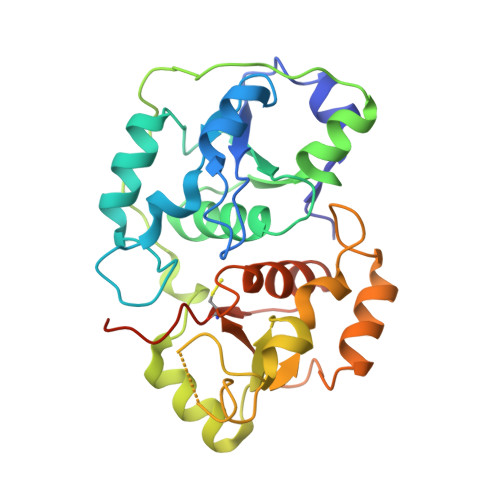The "Rhodanese" Fold and Catalytic Mechanism of 3-Mercaptopyruvate Sulfurtransferases: Crystal Structure of Ssea from Escherichia Coli
Spallarossa, A., Forlani, F., Carpen, A., Armirotti, A., Pagani, S., Bolognesi, M., Bordo, D.(2004) J Mol Biol 335: 583
- PubMed: 14672665
- DOI: https://doi.org/10.1016/j.jmb.2003.10.072
- Primary Citation of Related Structures:
1URH - PubMed Abstract:
3-Mercaptopyruvate sulfurtransferases (MSTs) catalyze, in vitro, the transfer of a sulfur atom from substrate to cyanide, yielding pyruvate and thiocyanate as products. They display clear structural homology with the protein fold observed in the rhodanese sulfurtransferase family, composed of two structurally related domains. The role of MSTs in vivo, as well as their detailed molecular mechanisms of action have been little investigated. Here, we report the crystal structure of SseA, a MST from Escherichia coli, which is the first MST three-dimensional structure disclosed to date. SseA displays specific structural differences relative to eukaryotic and prokaryotic rhodaneses. In particular, conformational variation of the rhodanese active site loop, hosting the family invariant catalytic Cys residue, may support a new sulfur transfer mechanism involving Cys237 as the nucleophilic species and His66, Arg102 and Asp262 as residues assisting catalysis.
Organizational Affiliation:
Dipartimento di Fisica-INFM, Centro di Eccellenza per la Ricerca Biomedica, Universita' di Genova; Via Dodecaneso 33, 16146 Genoa, Italy.
















